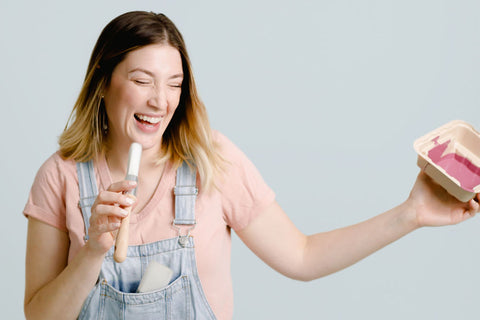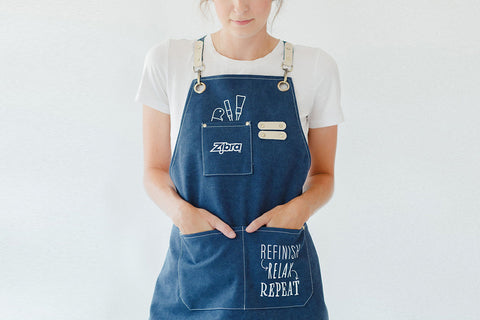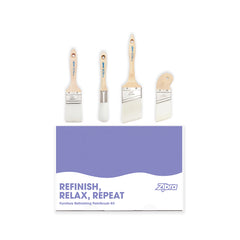The first and most important step for painting over stained wood is preparing the surface for paint. Without the proper prep work, your piece may not turn out as flawless as you would like. But when you sand the stained wood first, you can paint over stain with ease. If you are wondering, “Can I paint over stain without sanding it first?” The answer is yes, you can, but it is not advised. Sanding the stained surface preps the wood to hold the paint. If you skip this step, your color will eventually flake off the surface.
Step 2: Clean the Stained Surface
Once you finish sanding the stained wood, you need to take a wet cloth and wipe the wood down to remove any excess dust and grime. That way, when it comes time to paint, you’ll have a clean surface to work with, which will help the paint adhere.
Step 3: Prime the Wood Surface
Before you start painting over stained wood, it is vital to add a coat of primer paint. Priming your surface ensures the color you choose adheres to the wood. Oil-based primers work best because they add a layer of protection to the wood. If you are priming a large surface, use a Chiseled Wedge Paintbrush for this step. For smaller surfaces, a Fan Paintbrush will do the trick.
Step 4: Let Your Coat of Primer Dry Completely
For your primer to do its job and help your paint adhere to the wood surface, it is essential to let it dry completely before painting over stained wood. You may even consider whipping a cloth over your primer to ensure it is fully dry before moving on to the next step.
Step 5: Paint the Wood Surface
With your stained surface thoroughly prepped and ready to go, it is time to paint over stain. Many people ask, “Can you paint over stain with any color paint?” And the answer is yes. As long as you’ve added a layer of primer, you can use any color paint. With enough coats, the wood color will not come through the surface.
For the best results when painting over stained wood, use at least three to six coats of paint. You may need additional coats for a lighter color so the wood color does not seep through. Using a Large Surface Paintbrush for this step will make the process go quicker. For the best results, make sure to let each coat of paint dry completely before adding the next layer. Step 6: Add the Finishing Touch
Once you’ve coated the wood surface with paint, complete the project by adding a layer of Polycrylic Protective Finish to the surface. The primary purpose of the finish is to protect and seal your paint job. However, with glossy and matte finishes available, you can add a nice stylistic touch as well.
So, can you paint over stained wood? Yes! And now you know how to paint over stained wood quickly and effectively. Plus, you can find all of the painting tools you need to paint over stain with our paintbrush kits. Painting over stained wood has never been easier!
Great for detail work
Furniture Paintbrush Kit - 4 Piece
$47.95












